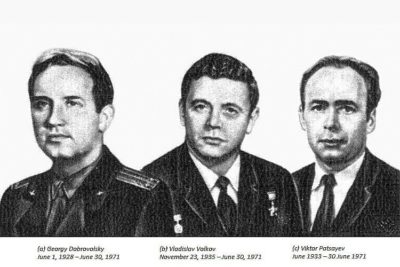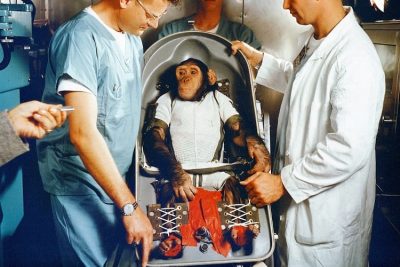A Glimpse into the Exciting World of Space Tourism
Share

Artistic impression of Aurora Space Station interior, a concept design of the world’s first luxury space hotel by Orion Span. (© Orion Span)
More than 100 years ago, Russian scientist Konstantin Eduardovich Tsiolkovsky helped the erstwhile USSR’s space programme. Thus, deaf Tsiolkovsky is a pioneer in rocket science.
After years of rejection, Tsiolkovsky became an inspiration to later Soviet scientists in the areas of space travel and space colonization.
During the 19th and early 20th centuries, the idea of space travel was unthinkable except in scientific papers. To make space travel possible, the Soviets developed a spacecraft that flew around the Earth in outer space sometime in 1957. The first living creature to orbit the Earth was Laika, a 2-year-old terrier mutt. The terrier mutt flew into Earth’s orbit and paved the way for modern space exploration.
Commercial activities
In 1961, a 27-year-old Soviet cosmonaut named Yuri Alekseyevich Gagarin became the first human to travel in space aboard spacecraft Vostok 1. Since then humans set their foot on the Moon, sent spacecraft to planets like Jupiter, Saturn, and Pluto and even landed a rover on Mars.
Till recently, all orbital spacecraft with human passengers have been developed as governmental ventures. But in the past few years, private participation has seen significant growth. Corporate entities like Virgin Galactic, SpaceX and Blue Origin have taken quick strides in spacecraft development for commercial activities.
With the result, taking a trip to outer space is no longer the matter of science fiction for humans. However, space travel or space tourism continues to be an expensive affair. But, soon it could become a viable scientific and holiday destination thanks to organizations promoted by Richard Branson, Elon Musk and Jeff Bezos.
These and other companies are today offering to take space tourists for astronomical fares. And, there is no need for such tourists to be savvy with scientific knowledge. They, however, need to undergo fitness tests under and get trained under the guidance of NASA officials before the lift-off.
What is space tourism?
The term refers to travelling into space by humans for leisure or recreational purposes. As of now, there are three types of space tourism, i.e. lunar space tourism, orbital and suborbital tourism.
Lunar space tourism
Elon Musk’s aerospace company SpaceX is planning to send two space tourists around the Moon in its reusable Big Falcon Rocket (Starship). The space travel, known as a Moon Loop, is expected to take place sometime in 2023.
While identifying the passenger on this trip, Elon Musk said Japanese billionaire Yusaku Maezawa is the lucky tourist on the Moon mission. It may be recalled that the last human Moon mission was in 1972 – the Apollo mission.
Orbital space tourism
Till today, the Russian Space Agency is the only organisation to offer orbital space tourism. In all, seven private persons paid their way to take part in orbital space tourism to date. This kind of tourism became possible in 2001 when the Russian company called MirCorp entered into a pact with a US firm named Space Adventures Ltd.
In April 2001, American businessman Dennis Tito flew into space to become the world’s first orbital space tourist. He paid $20 million to the Space Adventures for the flight and a 7-day stay on the International Space Station (ISS).

Dennis Tito (left), Talgat Musabayev (middle), and Yuri Baturin (right), the crew of Soyuz TM-32. (NASA)
Speaking after Dennis’ space journey, President of Space Adventures Tom Shelley said six others spent time on ISS. They included South African computer millionaire Mark Shuttleworth, American businessman Gregory Olsen, and Iranian-born American entrepreneur Anousheh Ansari.
The remaining orbital space tourists were American billionaire Charles Simonyi and American video game developer Richard Garriott. This tourism programme was, however, cancelled in 2010.
Suborbital space tourism
Spacecraft under this category fly up to an altitude of 100–160 km. At that height, passengers experience weightlessness for 3 to 6 minutes and they can get a view of the star field and that of the Earth’s curve.
Till the beginning of 2019, not one suborbital space tourism flight took off in spite of being affordable. The flight cost is projected in the range of $200,000 per passenger. Meanwhile, Virgin Galactic’s spacecraft known as ‘SpaceShipTwo’ is likely to achieve supersonic speed and take its first passengers on suborbital space tourism.
‘SpaceShipTwo’ is expected to be launched from an altitude of 50,000 feet. It is, then, likely to get a forward thrust from a jet aircraft known as WhiteKnightTwo. SpaceShipTwo is scheduled to carry six tourists and to two pilots on the trip. When? Branson is yet to decide the date. It is, however, confirmed is that Branson will be aboard the flight.

SpaceShipTwo. (Virgin Galactic / Mark Greenberg)
Zero gravity
In May 2018, Virgin Galactic’s SpaceShipTwo achieved supersonic speed in its second test run. When humans travel at such speeds, a lot of pressure will be exerted on their bodies. Interestingly though, when humans enter the zero gravity zone there is absolutely no pressure on their bodies making them weightless.
Also in the zero-gravity zones, there is a danger for humans to lose their bone density. Their bones could become brittle and there are chances of their bones breaking when they return to Earth.
Health risks
Similarly, human muscles and heart don’t work as required in zero gravity conditions. They, therefore, turn weak. To counter these and other health issues, NASA prepares the tourist recruits with hard workouts before, during, and after the space journey.
In spite of NASA’s training, experts believe that space tourists should be prepared to accumulate a high dose of radiation during the trip.
In addition to health risks, the tourists should be prepared for an inevitable accident in outer space. If the inevitable happens it will be extremely traumatic to the kith and kin of the tourists. Therefore, space tourism should be bracketed as a dangerous sport.
Space settlement
Al Globus writes in his article titled ‘Space Tourism Leads to Space Settlement’, space tourism could ensure low-cost and safe transportation for space settlements in future. Stating that space tourism could spur the market for cheaper space transport, Al Globus writes space tourism market will become larger than expected.
Futurists are already predicting settlements on Moon, Mars or asteroids. They hope that humans could have larger living spaces, improved resources and energy.
Futurists like Patrick Colins predicted that millions of tourists could fly into space very soon if the travel cost drops to $10,000 per person. Within 25 years from today, they feel orbital tourism will be much cheaper.
Reusable space vehicles
For this to happen, private companies need to manufacture passenger launch vehicles at drop-down prices.
According to Vice-president at Spaceport America Bill Gutman, reusable space vehicles are the key to the future of space tourism. Such vehicles will surely cut down overall manufacturing costs and slash travelling costs.
Cost of space tourism
With space vehicle manufacturing and travelling costs down, the focus of newer entrants will be on positioning space hotels in Earth’s orbit. Russia’s Orbital Technologies has already prepared a blueprint for building a space hotel that can accommodate seven guests. They are also preparing a blueprint for Lunar Colonies with a focus on leisure.
If California-based start-up Orion Span’s plans come true then the company is proposing to position its luxury space hotel in Earth’s orbit by 2021. The affordable orbital leisure destination named “Aurora Station” could begin to accommodate guests by 2022.
Orion Span’s Frank Bunger reveals that it could cost a guest at least $9.5 million for a 12-day stay on Aurora Station. Bunger disclosed that the space hotel, which is being built in the Bay Area, can accommodate two crew members and four guests. Bunger says that if demand grows, additional modules called space condos can be attached to the space hotel.
But with costs still astronomical, what could be the future of space tourism? It could be similar to the history of the airline industry. Initially, only wealthy people, politicians and government officials could afford to fly. With ticket costs crashing and potential passengers growing, the airline industry’s business prospects soared.
Therefore, recognising the imminent potential in space tourism, the government and private sectors should solve the problem of astronomical manufacturing costs and boost space travel.
Enjoyed this article? Also, check out “Space Advertising: The Race to Advertise in Outer Space“.
Reserve Now:
Orion Span
Fact Analysis:
STSTW Media strives to deliver accurate information through careful research. However, things can go wrong. If you find the above article inaccurate or biased, please let us know at [email protected]













